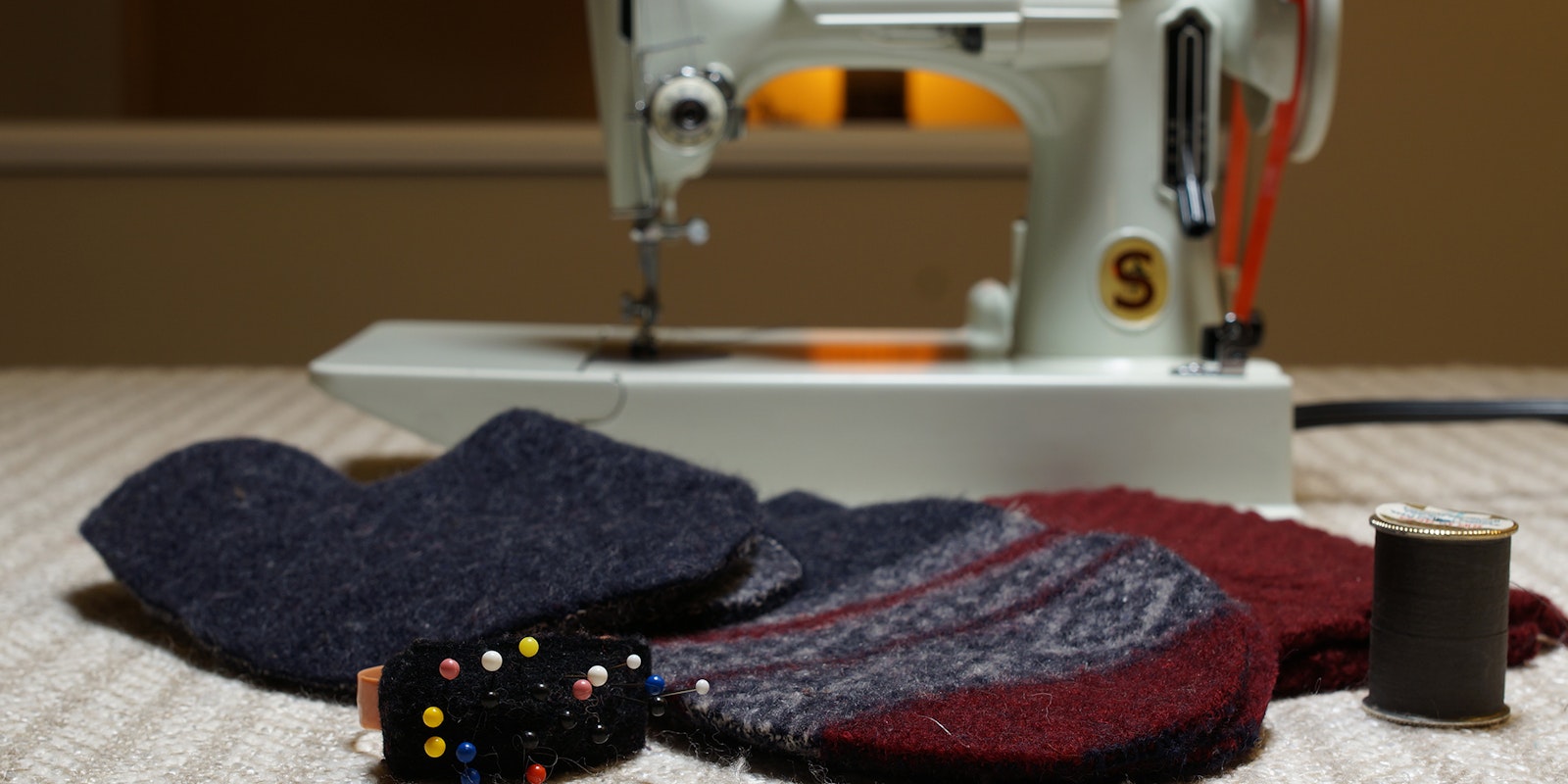It all began with a personal challenge: take $100 of seed money and see how much good you can do. The year was 2009, and oncology nurse Janet Tupy, who had not sewn since high school, was inspired by a pair of felted wool mittens she found in a gift shop. She enlisted a couple of friends to help, located a pattern, and spent $100 on wool sweaters at a thrift store. Their goal was to raise $1,000 for local food pantries by making and selling wool mittens. That first year, they raised $4,000 and ran out of mittens.
Fast forward 10 years, ReMitts has raised more than one-third of a million dollars, with the proceeds going to food pantries in the Madison, Wisconsin, area. In 2018 alone, ReMitts sold more than 2,100 pairs of mittens and raised almost $75,000. Remitts operates out of the lower level of a church, and about 25 volunteers serve year-round to make mittens for display in November and December. St. Vincent de Paul, one of the charities that benefits from the proceeds, donates wool sweaters that either do not meet the criteria for sale (stained or holey, for example) or have not sold in their stores. The 100-percent wool sweaters are laundered in hot water and dried at high temperatures at a laundromat.
 Mittens are made from discarded, 100-percent wool sweaters, and each pair is unique. ReMitts raised more than $366,000 in 10 years of operation.
Mittens are made from discarded, 100-percent wool sweaters, and each pair is unique. ReMitts raised more than $366,000 in 10 years of operation.
Making Mittens
Volunteers cut apart the fulled sweaters and discard the unusable parts—seams, collars, and portions of the fabric that are worn. They save the buttons for later embellishment, and store the fabrics according to color.
To make a pair of mittens, the volunteers choose a pattern or texture for the mitten top, then search for fabrics with complementary colors, textures, and weights for the balance of the mitten—the palm, fingers, and cuff.
Using the pattern pieces, they cut out the mitten components, and then linings are cut from stretchy, new polyester fleece. Volunteers then assemble all of the mitten parts into a kit. Most of the mittens are sized for women, but the volunteers create some kits for men and children, as well. Volunteers machine sew the kits at home. Back at the workshop, the sewn mittens are hand-finished with buttons and tacks at the cuffs, tagged for sale, examined for quality, and stored until the selling season. A pair of mittens may be obtained for a $35 donation, with cash and checks going directly to the food pantries. ReMitts retains a tiny portion of the income (less than 2 percent) for laundering the sweaters and purchasing the lining material.
 Fabrics from 2 to 4 sweaters are combined to make ReMitts upcycled mittens.
Fabrics from 2 to 4 sweaters are combined to make ReMitts upcycled mittens.
A variety of retailers, coffee shops, and restaurants display ReMitts mittens on handmade display racks. In exchange for a small amount of space and employee time to collect the money, the retailers gain goodwill and support for local food pantries. ReMitts also participates in several local art fairs during the holiday season. Many of the volunteers serve one day a week at the workshop, cutting apart sweaters, making kits, and hand-finishing mittens. The workshop builds camaraderie not unlike an old-fashioned quilting bee, according to Tupy. Other volunteers sew at home and rarely come to the workshop. Volunteers are encouraged to do what they enjoy most. In 2009, very few resources existed for upcycling mittens. Today, an internet search yields patterns and video tutorials for making similar mittens. Tupy, now retired from nursing, would like to see people in other cold climate communities duplicate ReMitts to raise money for their own local food pantries.
Start with $100 and see how much good you can do.
For more information about ReMitts, visit www.remitts.org and on Facebook at remitts.
Ann Massie Nelson sews, knits, writes, and produces video in Madison, Wisconsin.
Ren Patterson is a filmmaker and photographer in Verona, Wisconsin.
Originally published December 25, 2019; updated January 27, 2023.

